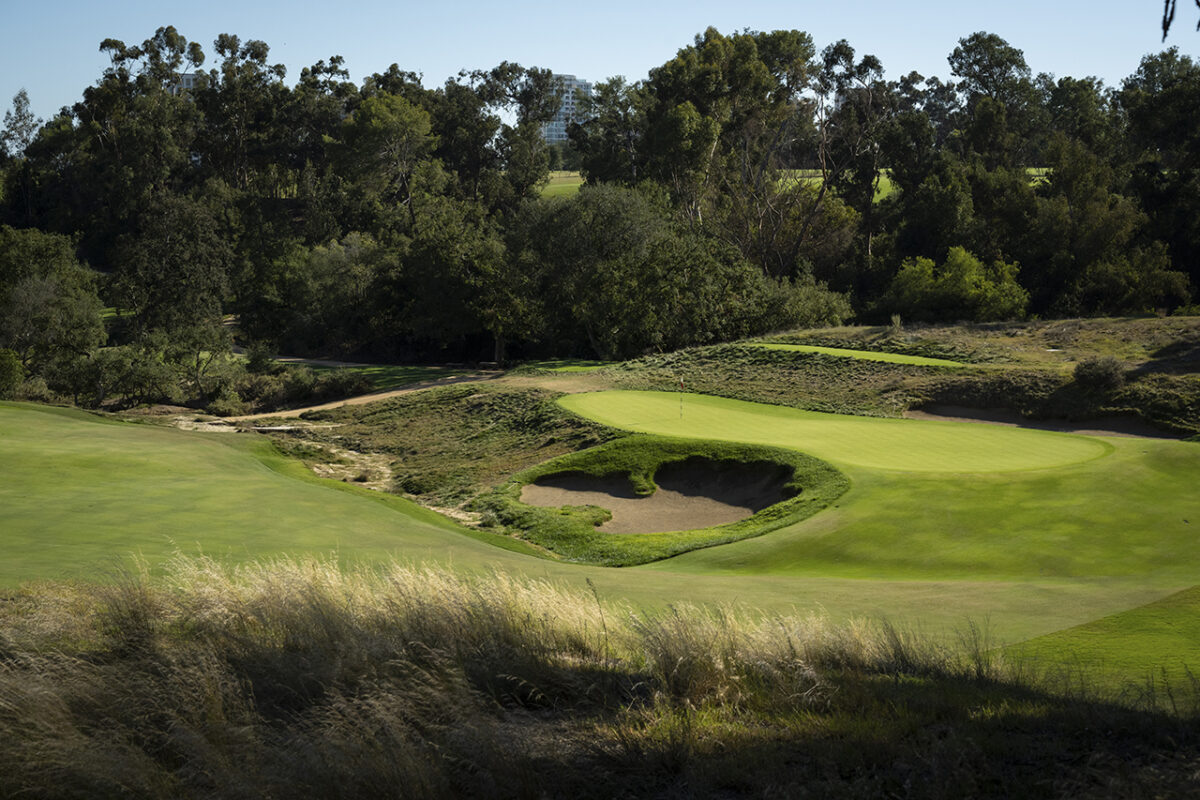[connatix div_id=”3f8b015acdd24c648befc5d5dac47469″ player_id=”b5b22055-8c69-4186-8375-d8426b37ec56″ cid=”7cbcea0d-4ce2-4c75-9a8d-fbe02a192c24″]
Golden-age golf architect George C. Thomas Jr. believed golfers should be presented with options — sometimes a confusing array of choices. His best courses offer multiple ways to play many holes, providing the best scoring chances to those players who choose the optimum angles in often wide playing corridors and who then have the ability to execute the preferred shot.
Those kinds of strategic demands will be on full exhibit in this year’s U.S. Open at The Los Angeles Country Club’s North Course, Thomas’ most highly ranked course as judged by Golfweek’s Best raters. Each of Thomas’ top three courses — including Riviera and Bel-Air — is near Los Angeles, but it’s LACC that tops the list, tying for No. 13 among all classic courses built before 1960 in the U.S.
Thomas’ North 1927 routing at LACC actually supplanted another layout by previous architects, introducing width and strategy atop glorious inland landforms, all within the urban confines of Beverly Hills with the Los Angeles skyline a frequent backdrop. Hills, valleys, barrancas and ridges provide constant intrigue as players approach a sublime set of greens guarded by bunkers that often intrude into the putting surfaces themselves.
As with many historically significant courses, Thomas’ design suffered through ensuing decades as holes were adjusted, bunkers and greens were shifted or moved outright, and trees grew where none belonged. Enter the modern architecture team of Gil Hanse and Jim Wagner — working in consultation with author Geoff Shackelford — at LACC.
[pickup_prop id=”33871″]
The trio began a restoration of Thomas’ North layout, with a first phase focused on a bunker restoration that evolved into the second phase of pretty much everything else. Several original Thomas greens were reintroduced, the dry gullies were brought back into play and width was re-established. The team’s work concluded in 2010 to rave reviews. This year’s Open will be the third in the past four years on courses restored by Hanse and Wagner, following the championships at Winged Foot West (2020) and The Country Club (2022).
The U.S. Golf Association has narrowed the fairways – which can reach 60 yards wide in places — a bit for this Open, but the North (7,381 yards; par 70 for the Open with five par 3s and three par 5s) still will play much wider than a typical Open layout. But what does all the talk about strategy mean, exactly, and how will it come into play in June? Check out three great examples at LACC on the following pages, with yardage book information provided by StrackaLine.
